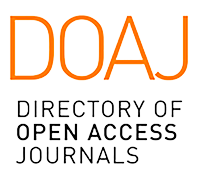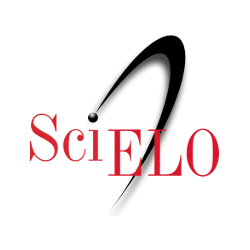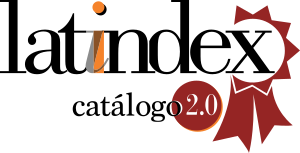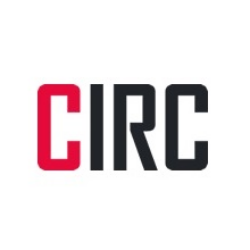


















La Exposición Universal de Roma (EUR) fue la mayor empresa edilicia bajo el régimen de Mussolini. Este complejo conscientemente reusó una política propagandista de la Roma imperial. De hecho, el gobierno fascista italiano realizó un esfuerzo constante para asociarse con el emperador Augusto. Las publicaciones sobre arquitectura fascista en Italia se han centrado en el debate estilístico. En cambio, este artículo focaliza su atención en el reúso de la propaganda augustea. Para ello he cruzado documentación fascista con publicaciones relativas a la arquitectura romana bajo el gobierno de Augusto. Esto permite la afirmación de una conexión más directa y profunda entre el área de la EUR y los foros imperiales romanos. A pesar de que esta relación no aparece reflejada en la documentación contemporánea al proyecto, el análisis arquitectónico y urbanístico del área eur denota la estrategia mencionada previamente.
Fuentes bibliográficas
Arthurs, Joshua. Excavating Modernity: The Roman Past in Fascist Italy, 94-96. Nueva York: Cornell University Press, 2012.
Balbo, Emilio. Protagonisti dei due imperi di Roma: Augusto e Mussolini. Roma: Casa Editrice Pinciana, 1940.
Bondanella, Peter. The Eternal City: Roman Images in the Modern World. Londres: University of North Carolina Press Enduring Editions, 2009.
Bottai, Giuseppe. L’Italia di Augusto e l’Italia di oggi. Roma: Istituto di Studi Romani, 1938.
Clausen, Wendell. Virgil: Eclogues. Clarendon: Oxford University Press, 1994.
Earl, Donald. The Age of Augustus. Londres: Elek Books, 1968.
Eatwell, Roger. Fascism: a History. Nueva York: Allen Lane, 1996.
Edwards, Catharine. Roman Presences: Receptions of Rome in European Culture, 1789-1945. Cambridge: Cambridge University Press, 1999.
Etlin, Richard A. Modernism in Italian Architecture: 1890–1940. Cambridge, M.A.: MIT Press, 1991.
Everitt, Anthony. The First Emperor: Caesar Augustus and the Triumph of Rome. Londres: John Murray, 2007.
Favro, Diane. "Making Rome a World City". En The Cambridge companion to the age of Augustus, editado por Karl Galinsky. Cambridge: Cambridge University Press, 2005.
Galinsky, Karl. Augustan Culture. Princeton, N.J.: Princeton University Press, 1996.
Gentile, Emilio. Fascismo di pietra. Roma: Laterza, 2008.
Gillette, Aaron. Racial Theories in Fascist Italy. Londres: Routledge, 2003.
Gregory, Tullio. E42. Utopia e scenario del regime. Davis: The University of California: Cataloghi
Kallis, Aristotle. The Third Rome, 1922-1943: the Making of the Fascist Capital. Basingstoke: Palgrave Macmillan, 2014.
Kostof, Spiro. A History of Architecture: Settings and Rituals. Nueva York: Oxford University Press, 2010.
Kostof, Spiro. The City Assembled: the Elements of Urban form Through History. Londres: Thames and Hudson, 1999.
Kostof, Spiro. The Third Rome: 1870-1950, Traffic and Glory. Berkeley: University Art Museum,1973.
Medina Lasansky, D. The Renaissance Perfected: Architecture, Spectacle, and Tourism in Fascist Italy. University Park: Pennsylvania State University Press, 2004.
Mostra della Civilta’ Italiana. Criteri fondamentali per la presentzione della Mostra. Roma: Casaldi, 1939.
Mussolini, Benito, Edoardo Susmel y Duilio Susmel. Opera omnia di Benito Mussolini. Vol. 26. Florencia: La Fenice, 1951, 82.
Mussolini, Benito, Edoardo Susmel y Duilio Susmel. Opera omnia di Benito Mussolini. Vol. 27. Florencia: La Fenice, 1951.
Pais, Ettore. "Il significato politico della storia di Roma". In Annuario dell’Università di Roma, 1929-1930. Roma: Sapienza Universita’ di Roma,1929-1930.
Pietro de Francisci, "Le basi giuridiche del principato". In Augusto, editado por Pietro de Francisci, 21-37. Padua: Collana Ca’ Foscari, 1939.
Speer, Albert . Inside the Third Reich. Londres: Weidenfeld & Nicolson, 2015.
Suetonius, Lives of the Caesars. Loeb Classical Library. Cambridge: Harvard University Press, 1997.
Virgil, Eclogues
Virgilio, Bucólicas. Geórgicas. Madrid: Editorial Gredos, 1990.
Vitruvius, Ten Books on Architecture. Cambridge: Cambridge University Press: 1999.
Watkin, David. The Roman Forum. Londres: Profile, 2011.
Zanker, Paul. The Power of Images in the Age of Augustus. Michigan: The University of Michigan Press, 1990.
Fuentes hemerográficas
Bacchiani, Alessandro. "Roma nel pensiero di Benito Mussolini", Capitolium, núm. 1 (1925): 387-392.
Cecchelli, Carlo. "Itinerario imperiale", Capitolium, núm. 4 (1938): 186-188.
Cecchi, E. "Il palazzo della Civilta’ italiana’", Civilta, núm. 1 (febrero de 1941): 5-8.
Cini, Vittorio. "Significato e aspetti dell’esposizione universale di Roma", Civilta (abril de 1940): 1-21.
Ciucci, Giorgio, and Ludovico Quaroni, "Giorgio Ciucci intervista Ludovico Quaroni", Casabella, núm. 49 (1985): 32-34.
Droge, A. J. "Finding his Niche: on the 'Autoapotheosis' of Augustus", Memoirs of the American Academy in Rome, núms. 56/57 (2011/2012): 85-212.
Etlin, Richard A. "Nationalism in Modern Italian Architecture, 1900-1940", Studies in the History of Art, núm. 29 (1991): 88-109.
Frateili, Arnaldo. "Come nasce una citta’’, Civilta, núm. 1 (1941): 12-22.
Foucault, Michelle. "Of Other Spaces, Heterotopia", Architecture, Mouvement, Continuite, núm. 5 (1984): 46-49. https://foucault.info/documents/heterotopia/foucault.heteroTopia.en/.
Ghirardo, Diane Yvonne. "Italian Architects and Fascist Politics: an Evaluation of the Rationalist’s Role in Regime Building", Journal of the Society of Architectural Historians, núm. 39 (1980): 109-127.
Handbook E42, “Programmema di Massima”, por el EUR Commissariato Generale, (1937), in MCR MAR materiales sueltos, caja 40.
Kallis, Aristotle. "A miglior tempo…: What Fascism Did Not Build in Rome", Journal of Modern Italian Studies, núm. 16 (2011): 59-83.
Montorsi, Paolo. "Il mito di roma nella pittura di regime (1937-1943): I mosaici del viale dell’impero e le opera decorative per l’E42", Bolletino d'Arte, núm. 82 (1993): 87-109.
Nelis, Jan. "Constructing Fascist Identity: Benito Mussolini and the Myth of ‘Romanita’’, The Classical World, núm. 100 (2007): 391-415.
Pagano, G. "Occasioni miste", Casabella, núm. 158 (1941): 1-7.
Trigger, Bruce G. "Monumental Architecture: A Thermodynamic explanation of Symbolic Behavior", World Archaeology, núm. 22 (1990): 119-132.
Electronic sources
Kallis, Aristotle. The Third Rome, 1922–1943: The Making of the Fascist Capital, <https://link-springer-com.ezproxy.lib.bbk.ac.uk/book/10.1057/9781137314031>